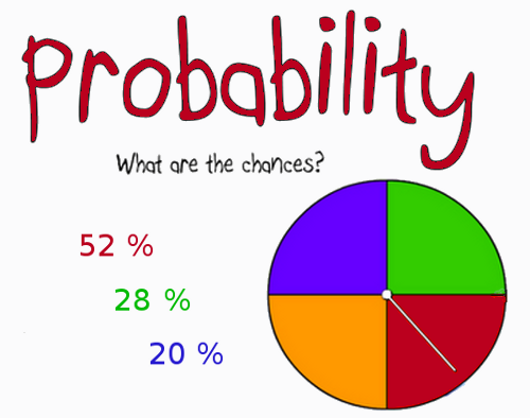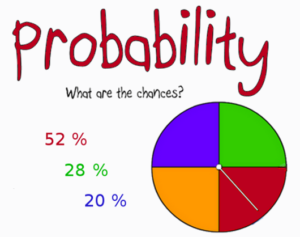
 The easiest way to explain probability is to use the coin example, an unbiased coin tossed fairly onto a flat open surface provides 2 possibilities Heads 50% Tails 50%. Tossing a coin 100 times may give a variance of 5 to 10% because of the small sample but as you carry on flipping the coin, the percentages will converge nearer to their true probability.
The easiest way to explain probability is to use the coin example, an unbiased coin tossed fairly onto a flat open surface provides 2 possibilities Heads 50% Tails 50%. Tossing a coin 100 times may give a variance of 5 to 10% because of the small sample but as you carry on flipping the coin, the percentages will converge nearer to their true probability.
The same can be said for a 6 sided die, the odds of throwing a 5 is 16.7%, choosing 2 numbers from the 6 has a 33% chance that you will be successful.
Although this is an example of fixed odds betting, where in a fair game, the probabilities are known in advance, it provides a good way of explaining the concept of value.
Lets take the coin flipping as an example of bad, fair and good value for money.
Someone offers odds of 4/5 about Heads and the same odds for Tails cialis danger over a period of 100 flips, we can calculate the odds by multiplying 0.8 (4/5) by 50 the probability of either of the two. 0.8x 50 winning results = 40, minus 50 losing bets = a loss of 10 points. This is a bad value proposition.
Another person offers odds of Even money the two, again we calculate, 1 x 50 winning bets = 50, minus 50 losing bets = 0, this is fair value, but no chance of long term gain.
A third person however offers odds of 5/4, we calculate again! 1.25 x 50 = 62.5 minus 50 losing bets = a profit of 12.5 points, we have found value and should bet.
Probabilities in Horse Racing are not fixed, odds are an expression of Judgement and public demand, to win at betting we must employ our judgement. We can still calculate our performance given a sample of results, as an example lets say we have had 200 bets of which 50 were winners 25%, the average odds of the winners was 7/2.
I use a 100 bet cycle, so calculate like this 25 (25%) x 3.5 (7/2) = 87.5 minus 75 = profit of 12.5 points per 100 hundred bets or 12.5% profit. Value has been found and you know that backing 25% winners at 3/1 is a break even position and anything lower than 3/1 at 25% success rate is a bad value outcome
